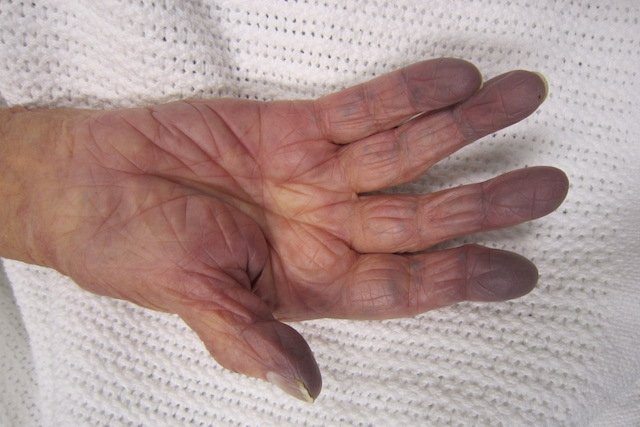Progeria: what it is, features and treatment
Content:
Progeria, also known as Hutchinson-Gilford Syndrome, is a rare genetic disorder that is characterized by accelerated aging, about seven times the normal rate, so a 10-year-old, for example, appears to be 70 years old.
The child with the syndrome is born apparently normal, just a little smaller for their gestational age, however as it develops, usually after the first year of life, there are some signs that are indicative of premature aging, that is, progeria. , such as hair loss, loss of subcutaneous fat and cardiovascular changes. As a disease that causes the body to age rapidly, children with progeria have an average life expectancy of 14 years for girls and 16 years for boys.
Hutchinson-Gilford Syndrome has no cure, however as the signs of aging appear, the pediatrician can recommend treatments that help improve the child's quality of life.

Main features
Initially, progeria has no specific signs or symptoms, however, from the first year of life onwards, some changes that are suggestive of the syndrome can be noticed and that should be investigated by the pediatrician through exams. Thus, the main characteristics of premature aging are:
- Delay in development;
- Thin face with small chin;
- Appearance of veins on the scalp that can reach the nasal septum;
- Head much larger than face;
- Hair loss, including eyelashes and eyebrows, with total hair loss being more common at age 3
- Marked delay in the fall and growth of new teeth;
- Protruding eyes and difficulty closing the eyelids;
- Lack of sexual maturation;
- Cardiovascular changes, such as hypertension and heart failure;
- Development of diabetes;
- Fragile bones;
- Inflammation in the joints;
- High voice;
- Decreased hearing ability.
Despite these characteristics, the child with progeria has normal immune system functioning and there is no impairment of the brain, so the child's cognitive development is preserved. In addition, although there is no development of sexual maturation due to hormonal changes, the other hormones involved in metabolism function correctly.
How is the treatment done?
There is no specific form of treatment for this disease and, therefore, the doctor suggests some treatments according to the characteristics that arise. Among the most used forms of treatment are:
- Daily use of aspirin: allows you to keep the blood thinner, preventing the formation of clots that can cause heart attacks or strokes;
- Physiotherapy sessions: help relieve joint inflammation and strengthen muscles, preventing easy fractures;
- Surgeries: are used to treat or prevent serious problems, especially in the heart.
In addition, the doctor can also prescribe other drugs, such as statins to reduce cholesterol, or growth hormones, if the child is very underweight, for example.
The child with progeria should be followed up by several health professionals, as this disease ends up affecting several systems. Thus, when the child begins to present joint and muscle pain, he should be seen by an orthopedist so that he can recommend the appropriate medication and give guidance on how to spare the joints, preventing the aggravation of arthritis and arthrosis. The cardiologist must accompany the child from the moment of diagnosis, since most patients with the disease die due to cardiac complications.
All children with progeria should have a diet guided by a nutritionist, to avoid osteoporosis as much as possible and improve their metabolism. Practicing some physical activity or sport at least 2 times a week is also advised, as it improves blood circulation, strengthens muscles, distracts the mind and consequently the quality of life of the family.
Being advised by a psychologist can also be useful for the child to understand his illness and in cases of depression, as well as being important for the family.
Leave a Reply
In order to leave comments, you need to log in




0 Comments